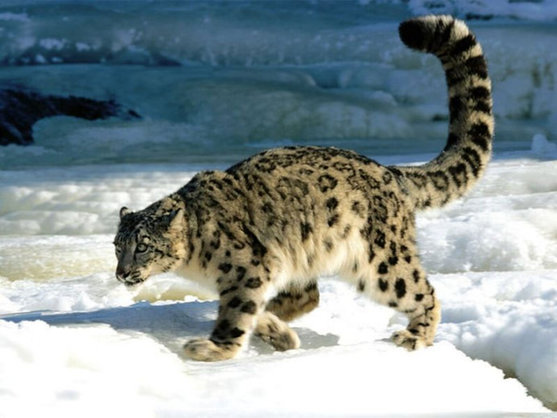Apr 23, 2012, 10.07PM IST
With poachers posing a massive threat to tigers in India, the National Tiger Conservation Authority (NTCA) has launched a pilot project in Uttarakhand's Corbett National Park for round-the-clock surveillance of the park using high definition cameras.
The project E-eye (electronic eye) is a software-based system where 10 high resolution thermal and infrared cameras mounted on a tower are spread across the 350 sq km area of the park that falls in a highly sensitive zone bordering Uttar Pradesh. The cameras capture image of objects weighing more than 20 kg and generate alerts if they are crossing the boundary. The alerts are sent to the control room in the park and the NTCA office in Delhi.
All the cameras have been placed in positions from where they cover the entire 350 sq km of the area and can be controlled by NTCA officials sitting in Delhi.
According to the NTCA, due to shortage of field staff it was getting difficult to cover the entire 800 sq km of the Corbett area and installation of cameras has brought down the incidence of infiltration in the area drastically.
The cost of the project is around Rs.3.5 crore.
"It is for the first time in the world that a surveillance system of this type is being used in any national park. The project was launched some five-six months back to check poaching of tigers in the park," Deputy Inspector General (DIG) of Forests and joint director of NTCA, S.P. Yadav said.
The cameras monitor the area 24X7 and send images even during the night.
"It has helped in checking infiltration, poaching and illegal mining in the area. As soon as the control room receives alerts and images of people or vehicles inside the area, an alert team is sent to the location," he said. Initially, the cameras have been placed on the Uttar Pradesh border as that was the sensitive area where several incidents of infiltration and poaching were reported in the past.
The NTCA will monitor the system for a year before replicating the project in other sensitive areas of India's 41 tiger reserves which houses a total of 1,706 tigers.
Yadav says that there have been incidents where people have been arrested for mining illegally in the area and it has instilled fear among the locals and they have stopped venturing into the protected zone.
The NTCA was helped in this project by a Pune-based company, Binomial Solutions Private Limited, set up by a group of young engineers and management graduates.
"It was my love for wild animals that made us come up with a system that can help in monitoring the park even in the night and sitting several kilometres away. It is a fool-proof anti-poaching system that gathers information, does processing, filtering and then sends alerts," Ravikant Singh, CEO of the company, told IANS.
The cameras can capture the thermal and normal image of the body mass irrespective of forest density and inclement weather conditions.
The company is also working with the Wildlife Institute of India ( WII) to develop a parallel system for counting of tigers.
"Besides, we have got the tender for installing a similar system in another tiger reserve and are also doing a case study in Assam's Kaziranga National park," said the 33-year-old techie.
http://timesofindia.indiatimes.com/home/environment/flora-fauna/E-eye-to-keep-a-tab-on-tigers-in-Corbett/articleshow/12841466.cms
With poachers posing a massive threat to tigers in India, the National Tiger Conservation Authority (NTCA) has launched a pilot project in Uttarakhand's Corbett National Park for round-the-clock surveillance of the park using high definition cameras.
The project E-eye (electronic eye) is a software-based system where 10 high resolution thermal and infrared cameras mounted on a tower are spread across the 350 sq km area of the park that falls in a highly sensitive zone bordering Uttar Pradesh. The cameras capture image of objects weighing more than 20 kg and generate alerts if they are crossing the boundary. The alerts are sent to the control room in the park and the NTCA office in Delhi.
All the cameras have been placed in positions from where they cover the entire 350 sq km of the area and can be controlled by NTCA officials sitting in Delhi.
According to the NTCA, due to shortage of field staff it was getting difficult to cover the entire 800 sq km of the Corbett area and installation of cameras has brought down the incidence of infiltration in the area drastically.
The cost of the project is around Rs.3.5 crore.
"It is for the first time in the world that a surveillance system of this type is being used in any national park. The project was launched some five-six months back to check poaching of tigers in the park," Deputy Inspector General (DIG) of Forests and joint director of NTCA, S.P. Yadav said.
The cameras monitor the area 24X7 and send images even during the night.
"It has helped in checking infiltration, poaching and illegal mining in the area. As soon as the control room receives alerts and images of people or vehicles inside the area, an alert team is sent to the location," he said. Initially, the cameras have been placed on the Uttar Pradesh border as that was the sensitive area where several incidents of infiltration and poaching were reported in the past.
The NTCA will monitor the system for a year before replicating the project in other sensitive areas of India's 41 tiger reserves which houses a total of 1,706 tigers.
Yadav says that there have been incidents where people have been arrested for mining illegally in the area and it has instilled fear among the locals and they have stopped venturing into the protected zone.
The NTCA was helped in this project by a Pune-based company, Binomial Solutions Private Limited, set up by a group of young engineers and management graduates.
"It was my love for wild animals that made us come up with a system that can help in monitoring the park even in the night and sitting several kilometres away. It is a fool-proof anti-poaching system that gathers information, does processing, filtering and then sends alerts," Ravikant Singh, CEO of the company, told IANS.
The cameras can capture the thermal and normal image of the body mass irrespective of forest density and inclement weather conditions.
The company is also working with the Wildlife Institute of India ( WII) to develop a parallel system for counting of tigers.
"Besides, we have got the tender for installing a similar system in another tiger reserve and are also doing a case study in Assam's Kaziranga National park," said the 33-year-old techie.
http://timesofindia.indiatimes.com/home/environment/flora-fauna/E-eye-to-keep-a-tab-on-tigers-in-Corbett/articleshow/12841466.cms




















